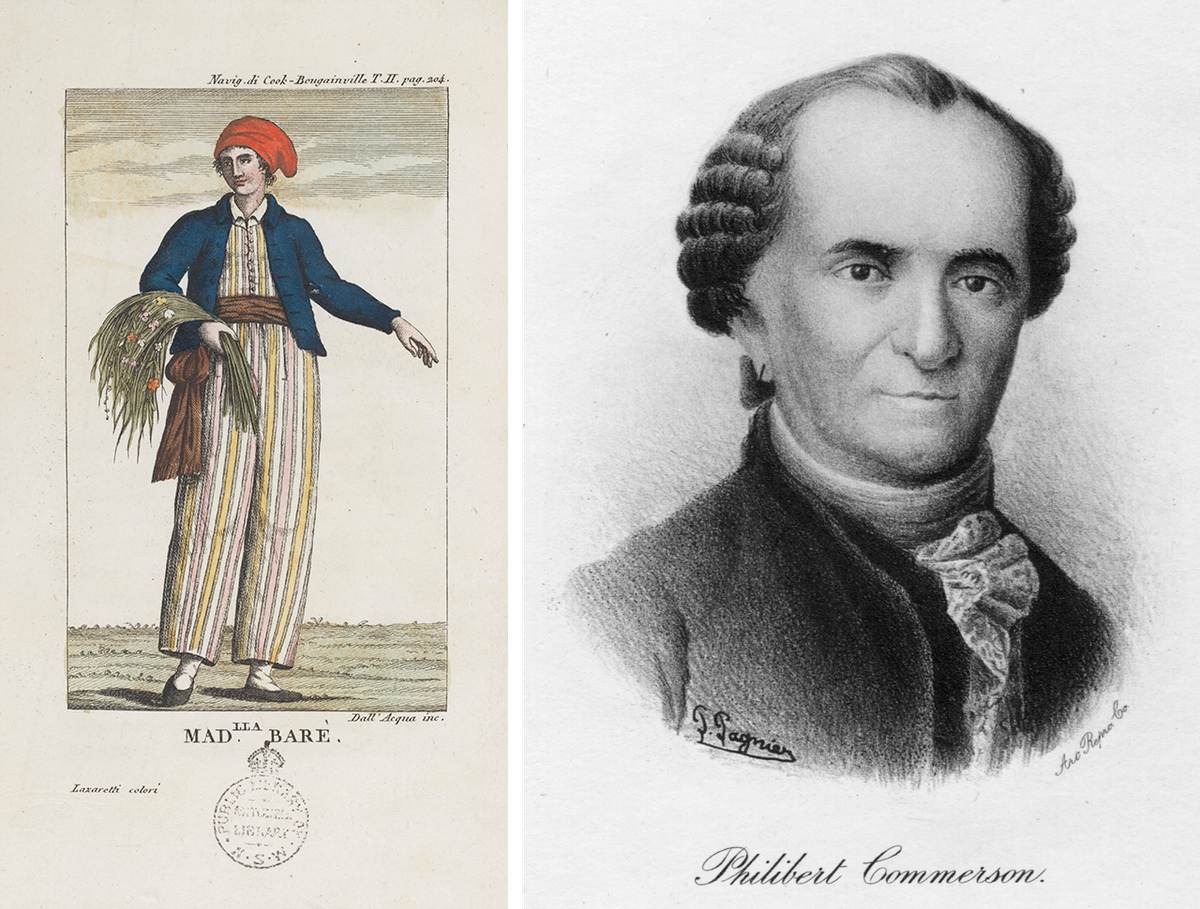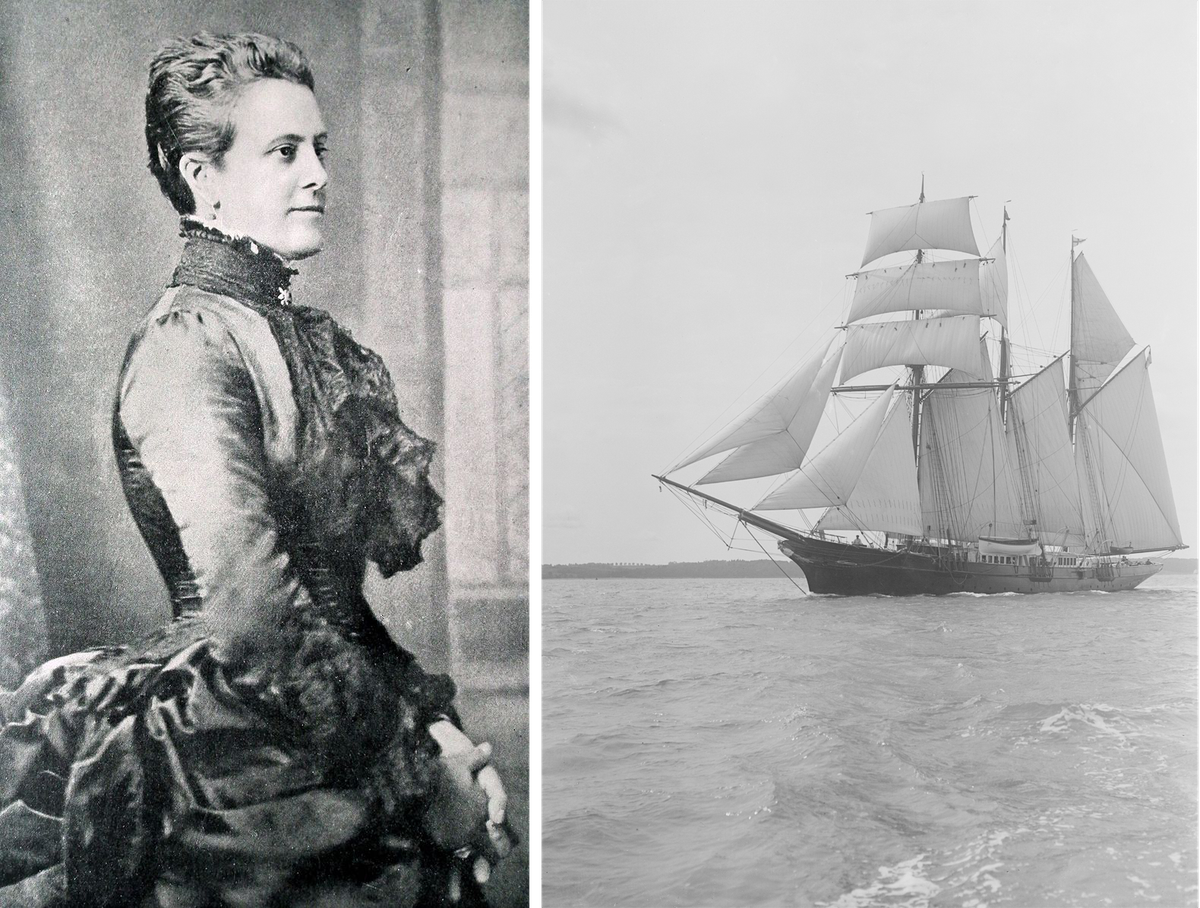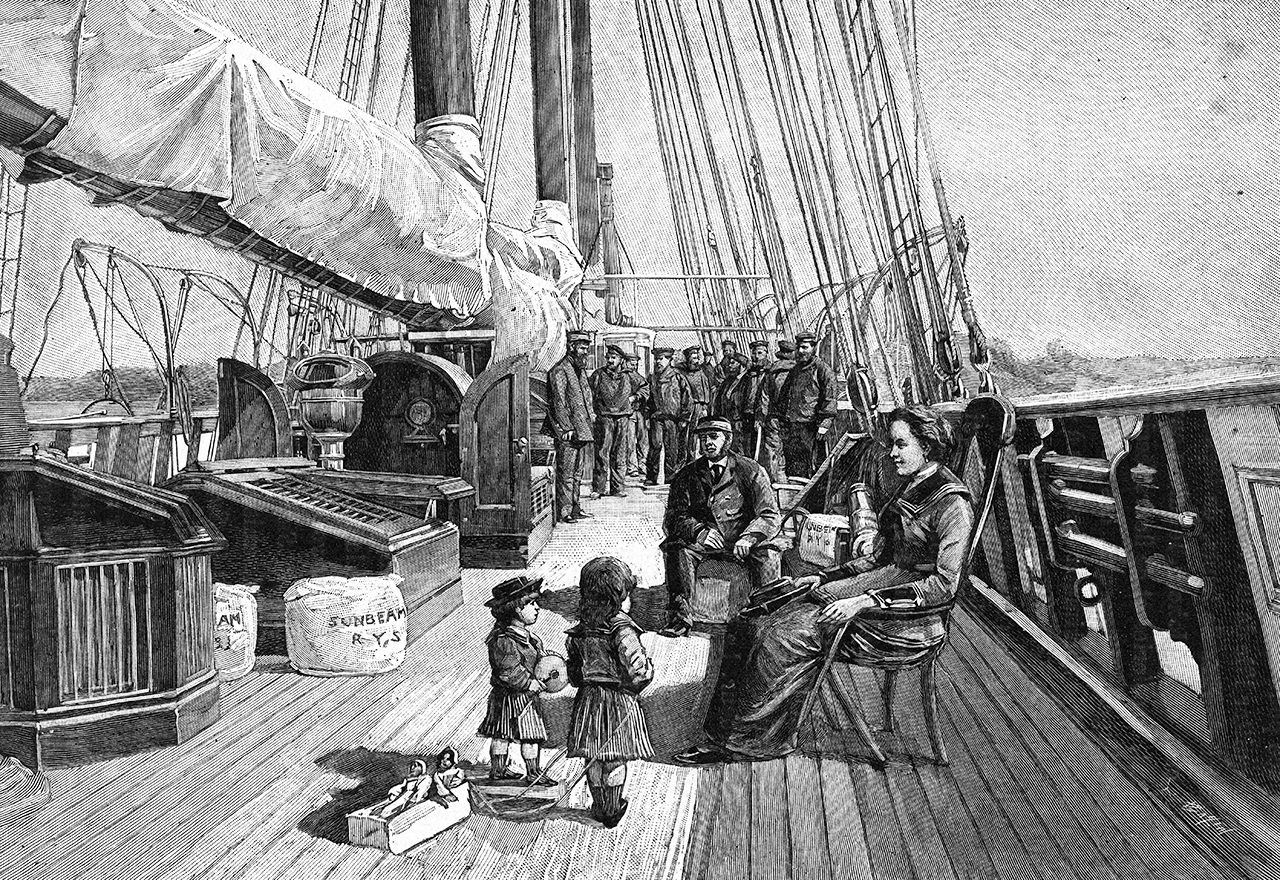The Adventurous Seafaring Women of the Age of Sail, in Their Own Words
Answering the call of the sea.
“Life is too short! I wanted to brighten it up as much as possible, and I shall never regret the decision which I took. Whereas had I acted differently, I would have nothing but regret.” These words were written by Rose de Freycinet, a woman from France, in her journal—and the “decision” was to disguise herself as a man in order to travel the world aboard the French corvette Uranie in 1817. Shipwreck, scandal, and homesickness stalked de Freycinet during her global tour, all documented in her journal, Mémoires, now kept in the State Library of New South Wales, in Sydney, Australia.
Stories of sea voyages, especially first-person accounts, are a source of enduring fascination, full of discovery, endurance, survival, and larger-than-life characters—usually men. In The Sea Journal: Seafarers’ Sketchbooks, historian Huw Lewis-Jones collects diaries, letters, and drawings, made at sea, “as if curating a kind of global exhibition of rare artworks and personal materials,” he says. “But of course this is only possible where journals, diaries, and sketchbooks survive.” Among those are the rare but compelling tales of the women who endured the hardships of life at sea: de Freycinet and her cross-dressing predecessor, botanist Jeanne Baret; Nantucket whaling captain’s wife Susan Veeder; and aristocratic English traveler Annie Brassey. “They faced the same challenges the men did,” says Lewis-Jones, “and then some.”

De Freycinet was just 23 years old when she arrived in the port of Toulon, intent on joining a three-year scientific voyage to the Pacific with her husband, Captain Louis de Freycinet. With Charles as a conspirator, she dressed as a man to begin the voyage (though she was soon found out), and became the first woman to document a circumnavigation of the world. Her journal reveals a rare perspective on the Age of Sail. Sea travelers kept journals for many different reasons, says Lewis-Jones: “navigation, recording coastlines, keeping mind and soul occupied, overcoming fear, as much as boredom.” De Freycinet wrote her journal as a series of letters to a friend, Caroline. She wrote as a means of escape from both the endless expanse of the sea and the tight confines of the shipboard cloister that kept her separate from the male crew. “You told me you wished to accompany me everywhere,” she wrote, “I therefore have no choice but to bore you a little whenever I myself am not having much fun.”
Life at sea is reflected in her journals—long periods without incident punctuated by moments of sudden activity and panic. In 1820, after two years at sea, inclement weather strafed Uranie and dragged it toward the rocky coast of the Falkland Islands, off the South American coast. “I shall never forget it as long as I live,” she wrote. Soon the ship struck a rock and the crew used pumps to keep the ailing vessel afloat as it sought a place to safely run aground. “However,” records Rose, “the ship was taking water; the breeze was light and the strength of the men, who had not eaten for a long time, was failing.” All were spared when Uranie ran “almost imperceptibly onto the sand at 3 a.m.”
By then the expedition had taken its toll on de Freycinet. “I am pale, yellowish, and have sunken eyes: in short I look like a ghost,” she wrote. She also underwent a mental transformation: “It is true that everything that I have endured during the last two years has given me such a sombre outlook on life that I have become a philosopher and that the gay, wild and scatterbrained Rose has become serious.”
Though women were forbidden from naval vessels, the de Freycinets were fêted upon their return to France. But de Freycinet had not been the first woman known to have posed as a man to sail around the world. That was Jeanne Baret, daughter of agricultural laborers from France’s Loire Valley. With the collusion of a lover, she passed as “Jean” on Louis Antoine de Bougainville’s 1766 expedition, where she worked as a botanist, to sail around the world. If she kept a journal it is not known, but her remarkable story survives in the accounts of four crewmates.

Baret’s ally and lover was scientist Philibert Commerson. “That said, the quick-wittedness and determination needed to sustain her disguise was Baret’s alone,” says Glynis Ridley, of the University of Louisville and author of The Discovery of Jeanne Baret. After a year and a half at sea, she was reportedly revealed as a woman in Tahiti—though she had probably aroused suspicion already. She did not relieve herself with the crew and the surgeon noted that her care for Commerson “did not seem natural for a male servant.”
Both de Freycinet and Baret were seriously transgressing social norms. Merely entering the company of men was seen as morally suspect, says Ridley. And both were also involved in scientific work. “Baret’s life spans a period that was one of intense debate about women’s exposure to scientific knowledge,” says Ridley. “A female stowaway was a curiosity, a female botanist was a breach in the natural order of things.” Baret became the first woman recipient of a French government pension for her contribution to science. Ultimately, says Ridley, “Baret refused to be bound by others’ limited expectations for someone of her sex and class.”
As time passed, some navies permitted officers to bring their wives aboard, but on merchant vessels, where space and speed were at a premium, the situation was different. “Merchant vessels rarely carried women except as passengers or, of course in the case of the slave trade, as cargo,” says Lisa Norling, a historian at the University of Minnesota who specializes in women and gender in the maritime world. Eventually even merchants and whalers saw more women on board. “By the early 19th century it was becoming more common, especially as non-naval vessels were going farther and farther away.”

The journal of Susan Veeder is furnished with gorgeous watercolors, several of which Lewis-Jones reproduces in The Sea Journal, and traces the voyage she embarked upon in 1848 on the Nantucket whaling ship Nauticon. Veeder’s entries make brief mention of weather conditions and islands sighted, but her illustrations of the Galápagos, Pitcairn Island, and Peru truly stand out. Her journal otherwise describes the hospitality she encountered—“the Captn gave me Jar of plums a tin of soup a Cheese a few bottles of wine”—and her homesickness. “Going along nicely towards home,” she writes. “I hasten the time when we may arrive.”
Due to declining whale numbers, in the 19th century whalers had to hunt farther from home. Like in the navies, captains and others were sometimes allowed by owners to bring their families with them. Women had long provided essential support to the whale industry from shore. Veeder, wife of Nauticon’s captain, and women like her were obliged to participate in arduous voyages to the Pacific. “For some of them, it was very clear they felt their place was to be with their husband,” says Norling. “That was their job.”
A captain’s wife would have had “privileges but real restrictions on most of the whaling vessels,” she adds. “They were not allowed on deck when there was a whale that was being processed because they would be in the way…. The whole deck would become a slaughterhouse. It stunk, it was dirty, and the smoke was horrific.” For the crew, the captain’s wife would have personified the difference in rank—and the men resented anything that prolonged their tours, such as the captain putting into port for his family’s health.
Seafaring was wearisome, but the tedium made moments of joy and pain stand out. On December 31, 1849, Veeder wrote that her daughter Mary, also on the voyage, “is 11 months old has 7 teeth creeps all about the ship and is very cunning.” Barely three months later, Mary became fatally ill in Tahiti. For five years Veeder shared in the hardship of Nauticon, raising a family at sea. She lost a daughter and later, her husband—to infidelity.

Toward the turn of the century, the Age of Sail was passing into memory. Steamships were faster and more reliable, and required different skills, such as the management of coal rather than the wind. Old hands lamented the decline of sailing and the dull monotony of steaming. But there were also those, such as Lady Annie Brassey, who embraced the technology’s capacity for travel and romance.
Sunbeam was a 532-ton, three-masted schooner equipped with 9,000 yards of sail and a 70-horsepower steam engine. It had a crew of 43, including Brassey and her family, and it was the first steam yacht to circumnavigate the globe, in 1876 and 1877. The English heiress wrote daily letters about her experiences on board, and published them in the bestselling A Voyage in the ‘Sunbeam’.
Her curiosity was sated thanks to her class and marriage into the family of a railway tycoon, which let her travel in luxury, to esteemed receptions around the world. She was also an energetic collector, and many of the items she procured along the way are in museums in her native Sussex. She writes of visiting pawnbrokers’ shops where “out of funny little boxes and bags and parcels [they] produce all sorts of rare and curious things.” Among her unusual collection was a feathered cloak from Hawaiʻi, a Buddhist offering vessel from Southeast Asia in the shape of a sacred hamsa bird, and a helmet mask from Papua New Guinea made of wood, fiber, and mud.

Brassey’s letters were “a sort of open diary” for family, says Julian Porter, curator at Bexhill Museum in Sussex. “Annie’s books were in some way just opening up that distribution list to the general public.” She discussed food, sights, and the people she met, as well as crises—threats of being boarded one day, a volcanic dust storm another. “Happily, the children don’t know what fear is,” she observed. “The maids, however, were very frightened, as some of the sea had got down into the nursery.”
“Annie wasn’t a natural sailor,” says Porter. She “often suffered from seasickness but rarely complained. She was almost completely fearless.” Brassey was always troubled by ill health, however, and was finally stricken with malaria in 1887. “I am sure she realized she wasn’t likely to make it to old age,” says Porter. “She had a ‘bucket list’ and she was taking it by the horns.”
Like the seafaring women that preceded her, Brassey possessed courage and a sense of adventure as she pursued the lure of the sea. The journals and other items that bear the names of these women vividly document extraordinary journeys and experiences—both psychological and geographical. “That’s what true explorers do,” says Lewis-Jones, “change the way we see and understand the world.”
You can join the conversation about this and other stories in the Atlas Obscura Community Forums.




![Anne Bonny and Mary Read were both "convicted of piracy at a Court of Vice Admiralty [and] held at St. Jago de la Vega on the Island of Jamaica, 28th November 1720," according to the inscription accompanying this 1724 Benjamin Cole engraving from <em>A General History of the Pyrates</em>, by Daniel Defoe and Charles Johnson.](https://img.atlasobscura.com/5_kDHgENxQkc0QzZuPs_kICvmEP5JNCV8bcXDI7m5Do/rs:fill:600:400:1/g:ce/q:81/sm:1/scp:1/ar:1/aHR0cHM6Ly9hdGxh/cy1kZXYuczMuYW1h/em9uYXdzLmNvbS91/cGxvYWRzL2Fzc2V0/cy81NDQ0ZGNiMi1m/YzRkLTQ4YjUtYTVh/MC0xYzU2ZDliOTY0/YjY1NGNkMWI4MWEw/OTExMDM5ZTZfQW5u/ZSBCb25ueSBhbmQg/TWFyeSBSZWFkIC0g/RmVtYWxlIFBpcmF0/ZXMgaW4gMTgwMHMu/anBn.jpg)

















Follow us on Twitter to get the latest on the world's hidden wonders.
Like us on Facebook to get the latest on the world's hidden wonders.
Follow us on Twitter Like us on Facebook